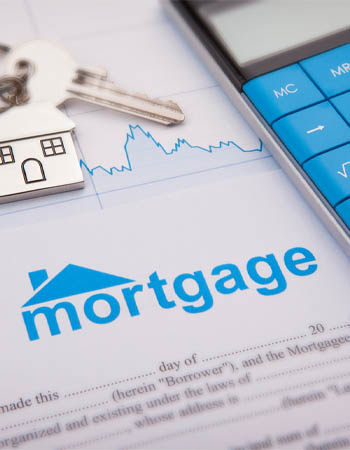We may earn revenue from the products available on this page and participate in affiliate programs. Learn More ›
What You Need to Know
- A home equity loan is a type of loan that allows homeowners to borrow money against the equity they have in their home.
- Home equity lenders usually have requirements for borrowers to meet in order to qualify for a loan. These can include a minimum credit score and a maximum debt-to-income ratio.
- Home equity loans can help homeowners pay for renovations, consolidate high-interest debt, and pay medical bills.
- Some home equity loan alternatives to consider include home equity lines of credit (HELOCs), cash-out refinances, and personal loans.
Q: We’ve been living in our home for 15 years and love it, but we are ready to make some upgrades that we’ve been putting off for years. Can we use our home equity to finance these upgrades? What is a home equity loan, exactly, and how does a home equity loan work?
A: A home equity loan is a common way to get equity out of a home to finance home improvements. Home equity loan interest rates are usually lower than those on other kinds of personal loans, which means less interest paid over the life of the loan. The best home equity loan lenders, such as U.S. Bank and Flagstar, give qualified homeowners the opportunity to access their home equity to pay for home improvements and upgrades. As an added bonus, these improvements can increase the value of the home.
Understanding how a home equity loan works is an essential first step in applying for this type of loan. Learn more about home equity loans, how to get a home equity loan, the best ways to use a home equity loan, and the pros and cons of using your home equity to pay for your next home project.
A home equity loan lets you borrow against the amount of your mortgage you’ve paid off.

When a buyer purchases a home, they don’t really “own” the home until they’ve paid off their mortgage. If the buyer made a down payment at the time they took out their mortgage, that amount is the portion of the home they actually “own.” As a homeowner makes their monthly mortgage payments, their equity increases. And as they advance through their mortgage, the amount of money that goes toward the principal increases, while less goes toward interest.
The percentage of the home that has been paid for is called equity. This is the pool of money that a home equity loan—also known as a second mortgage—allows homeowners to borrow from. The remainder of the home is still owned by the lender of their first (or primary) mortgage. If the borrower defaults, the primary mortgage will be paid off first, and the home equity loan will be paid off second.
Homeowners can also make additional mortgage payments as they are able to help them build equity more quickly. For example, they might choose to put a tax refund or a bonus from their employer toward their mortgage to build up equity faster. Some homeowners may be able to pay a higher monthly payment than is required by the lender, which can also help them build equity faster.
The real estate market fluctuates over time, which means home values can increase or decrease from month to month or year to year. Homeowners who purchased their home at a time when home prices were generally low may be able to qualify for a home equity loan if their home’s value has increased considerably since purchase. And homeowners who have put a lot of work into their home may also find that the home’s value has increased significantly.
A simple calculation can help you determine how much you can borrow.
Many lenders cap the amount of money a homeowner can owe on their home, including the original mortgage and the home equity loan. According to the Federal Trade Commission (FTC), lenders generally prefer that homeowners borrow no more than 80 percent of the value of their home. Therefore, homeowners need to multiply the current value of their home by 0.8 or use a home equity loan calculator to determine the amount of debt they can carry on their home.
From there, the homeowner will need to subtract the amount that is still owed on their primary mortgage. This leaves them with the total amount they can borrow with a home equity loan. There are a number of home equity calculators available online that can provide a rough idea of how much equity a homeowner has. For precise numbers, though, they’ll need to get an appraisal to determine their home’s current value.
For a home valued at $500,000 that has a primary mortgage of $250,000, the calculation would be as follows:
$500,000 x 0.8 = $400,000
$400,000 – $250,000 = $150,000
In this example, the homeowner would be able to borrow up to $150,000 with a home equity loan. However, it’s inadvisable for a homeowner to automatically take the maximum amount available since the home is the collateral for this new loan and for the mortgage. Defaulting on the mortgage or the home equity loan can result in the homeowner losing their home. Therefore, homeowners will want to determine their project cost before applying for a home equity loan and only borrow the amount they need.

The main requirements for a home equity loan include a certain amount of equity, a good credit score, and a low debt-to-income ratio.
One of the most important home equity loan requirements is for the homeowner to have a certain amount of equity in their home. The exact amount of equity required can differ from lender to lender, but in general borrowers must have between 15 and 20 percent in home equity. Equity is calculated by subtracting the amount the homeowner owes on the house from its appraised value. For a home appraised at $450,000, a homeowner would need to owe no more than $360,000 to have 20 percent equity in the home.
Borrowers must generally have an acceptable credit history and score along with a low debt-to-income ratio to qualify for a home equity loan. Requirements vary among lenders, but in general a borrower with a credit score of 620 or higher will be more likely to qualify for a home equity loan. Borrowers with “good” or “excellent” credit scores of 670 and above will likely be offered lower home equity loan rates than those whose credit score falls between 620 and 670. It may be possible for a borrower to get a home equity loan with bad credit, but it’ll be a lot harder for them to find a lender to work with.
In addition to an acceptable credit score, a borrower must typically have a debt-to-income (DTI) ratio of 43 percent or lower. To calculate DTI, homeowners can divide their monthly debt payments (including auto loans, student loans, personal loans, minimum credit card payments, child support, and alimony payments) by their pretax income. For example, a borrower with a monthly pretax income of $5,000 and monthly debt payments of $1,500 would have a DTI of 30 percent.
Borrowers can use a home equity loan to fund almost anything from home improvements to medical bills.
Homeowners can use the money borrowed from their home equity however they choose. Home equity loans are commonly used to fund home improvement projects, consolidate debt, or pay off large medical bills.
- Home improvements or upgrades. Using home equity to pay for home improvements is a smart move. That’s because homeowners will be using the money in a way that increases the value of their home. Additionally, homeowners may be able to get a tax deduction on home equity loan interest if they use the funds to pay for certain home improvements.
- High-interest debt consolidation. Credit card debt can quickly spiral, and homeowners may find it difficult to keep up with the minimum monthly payments. Using a home equity loan to consolidate high-interest credit card debt can help dramatically decrease the amount of interest the homeowner pays, and it can help them pay off their debt faster.
- Paying off large medical bills. Even if a homeowner has health insurance coverage, they may be faced with expensive medical bills if they develop a long-term condition or are involved in a serious accident. A home equity loan can help pay down medical debt so the homeowner or their loved one can focus on getting healthy.
Average home equity loan rates are usually quite favorable compared to unsecured loans. This is because at least a portion of the mortgage has already been successfully paid down and the home itself can be used as collateral. However, homeowners will want to keep in mind that the loan still has to be repaid—regardless of what the money was spent on—and if they are unable to pay it back, they can lose their home. That makes it inadvisable to use a home equity loan to pay for expenses that don’t benefit the homeowner long term, like a vacation, wedding, or a child’s college tuition—even if they can find the lowest home equity loan rates available.

Before taking out a home equity loan, borrowers may want to consider some alternatives.
A home equity loan is just one option for homeowners looking to get equity out of their home. Borrowers will want to consider home equity loan alternatives, including comparing a home equity line of credit, or HELOC vs. home equity loan, or even a cash-out refinance vs. home equity loan, depending on their needs and wants.
With a HELOC, a homeowner will be approved for a revolving line of credit that is borrowed against their home equity. A HELOC works similarly to a credit card: the borrower can take out money up to the credit limit and will make minimum monthly payments or pay off the balance each month. HELOCs have a “draw period,” which is the period of time when the borrower can take out funds from the line of credit. During this period, the borrower may only be required to pay interest. Once the draw period has come to an end, the borrower will enter the repayment period, during which they will make monthly payments that will go toward both principal and interest. It’s worth shopping around to find the best home equity loan rates and comparing the terms offered by the best HELOC lenders to determine which is the best fit.
A cash-out refinance is different from a home equity loan and a HELOC, both of which add a second monthly payment to the borrower’s primary mortgage. A loan from one of the best mortgage refinance companies (such as PNC Bank or Caliber Home Loans) replaces the primary mortgage so the borrower will only have one mortgage payment each month. A borrower can choose a refinance to lower their interest rate (and with it their monthly payments), or they may choose to take out a lump sum of cash from their home equity as part of a cash-out refinance. While a basic refinance may reduce the borrower’s monthly mortgage payments, a cash-out refinance will likely increase their monthly payment since the loan amount will be higher.
Borrowers who don’t qualify for a home equity loan, HELOC, or cash-out refinance can look to alternatives if they are in need of cash for home improvements, unexpected medical bills, or credit card debt repayment. These home equity loan alternatives include personal loans, credit cards, CD loans, and family loans.
- A personal loan is a type of unsecured loan with a fixed interest rate and an average term of 1 to 7 years. These loans tend to have a higher interest rate but can be a good option for those who don’t have enough equity in their home to qualify for a home equity loan.
- A credit card can be a useful tool if used responsibly. Borrowers with good credit histories may qualify for a 0 percent APR introductory rate, which means they won’t be required to pay interest on purchases during a set period of time.
- A CD loan is a type of secured loan for borrowers who have a certificate of deposit (CD) savings account. CD loans generally have lower interest rates than home equity loans, making them a potential option for homeowners who want to finance a short-term home improvement project without touching their home equity.
- A family loan could be an option for some people. In general, family members are less likely to charge high borrowing costs, and depending on the family member, they may be willing to give the borrower an interest-free loan. However, borrowing money from family can be risky; failing to repay a loan can result in irreparable damage to the relationship.

There are pros and cons to getting a home equity loan.
The biggest benefit of a home equity loan is that it provides borrowers with access to a lump-sum cash payment that can be used for any type of expense. On the other hand, since a home equity loan uses the home as collateral, homeowners risk literally losing the roof over their head if they default on the loan. There are several pros and cons of a home equity loan for borrowers to consider before filling out an application.
| Pros | Cons |
| Pays a lump sum of cash | Uses home as collateral |
| Relatively easy qualification requirements | Closing costs |
| Relatively low interest rates | Additional mortgage payment |
| Fixed monthly payments | Reduction in equity |
| Potential tax advantages | Loan is due at closing if the borrower sells the home before the loan term is up |
| No restrictions on use of funds |
Home equity loans can be relatively easy to qualify for when compared with other types of loans, such as personal loans. That’s because a home equity loan is a secured loan, whereas a personal loan is unsecured. A home equity loan uses the home as collateral, which provides lenders with a way to recoup their losses if the borrower defaults.
This security also means that home equity loans often have lower interest rates than other types of loans. The interest rate on a home equity loan is fixed for the life of the loan, which means the homeowner will have fixed monthly payments that are easier to fit into their budget.
Additionally, borrowers may be able to deduct the interest on their home equity loan from their taxable income if they use the loan to pay for home improvements or renovations. To be eligible for this tax deduction, homeowners must make improvements that increase their home’s value or extend its life. Homeowners will want to consult a tax professional or financial adviser to determine whether they’re eligible for this deduction.
Home equity loans also have their disadvantages. Since the loan is secured by the borrower’s home, they risk losing their home to the lender if they default on loan payments. And since a home equity loan is essentially a second mortgage, borrowers will have to keep up with two monthly payments. And if the homeowner wants to sell the home before the loan term expires, they’ll need to pay off two mortgages in full instead of one.
Just like a mortgage, a home equity loan comes with closing costs that the borrower must pay when they close on the loan. Closing costs vary depending on the lender, but they may include fees for the appraisal, credit report, document preparation, attorneys, loan origination, notaries, and title search. Closing costs for a home equity loan generally range between 2 and 5 percent of the loan amount, and some lenders will allow a borrower to roll the closing costs into the loan amount to avoid paying them out of pocket. Borrowers can ask lenders about home equity loan closing costs when they’re shopping around for quotes.
A home equity loan can be a smart choice for homeowners who want to make home improvements, pay down high-interest debt, or pay off large medical bills. However, a homeowner must meet the lender’s requirements to qualify for a home equity loan. Therefore, homeowners will want to plan ahead and do their research before applying for a home equity loan.


